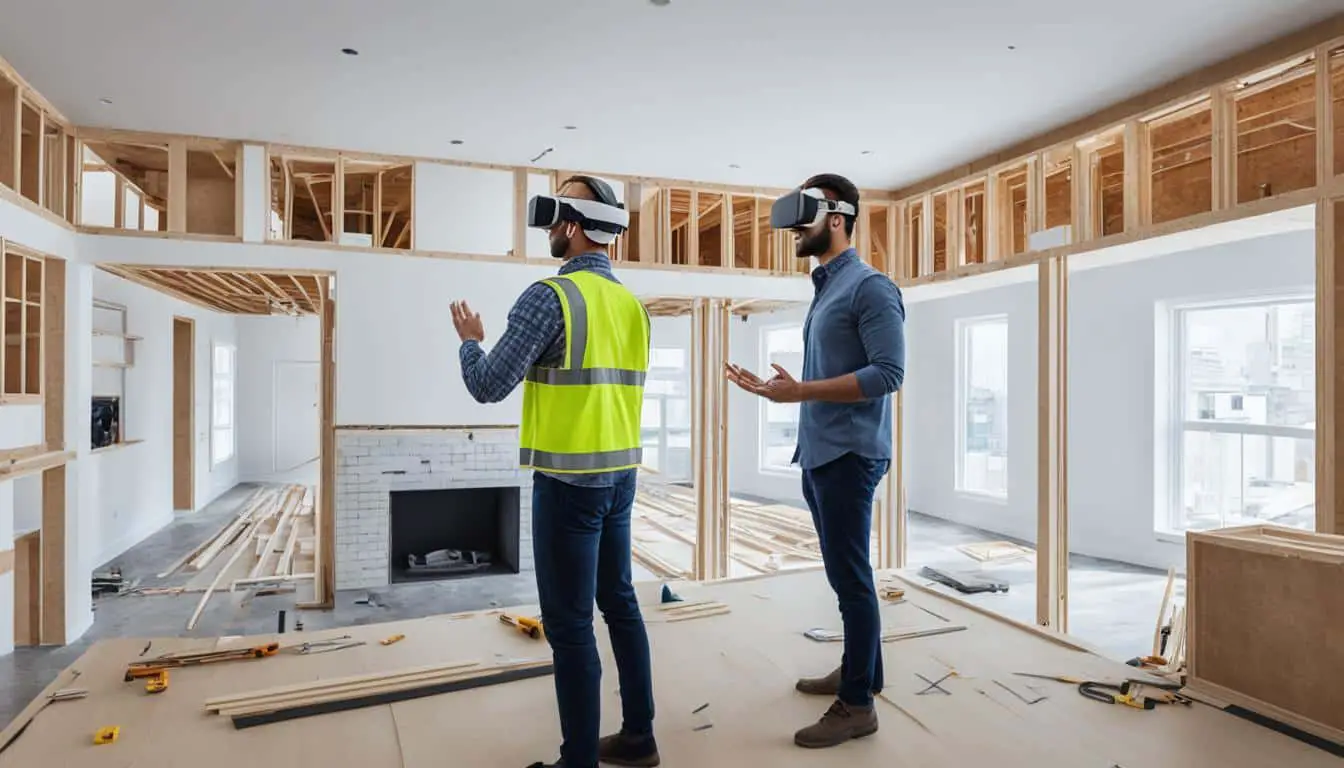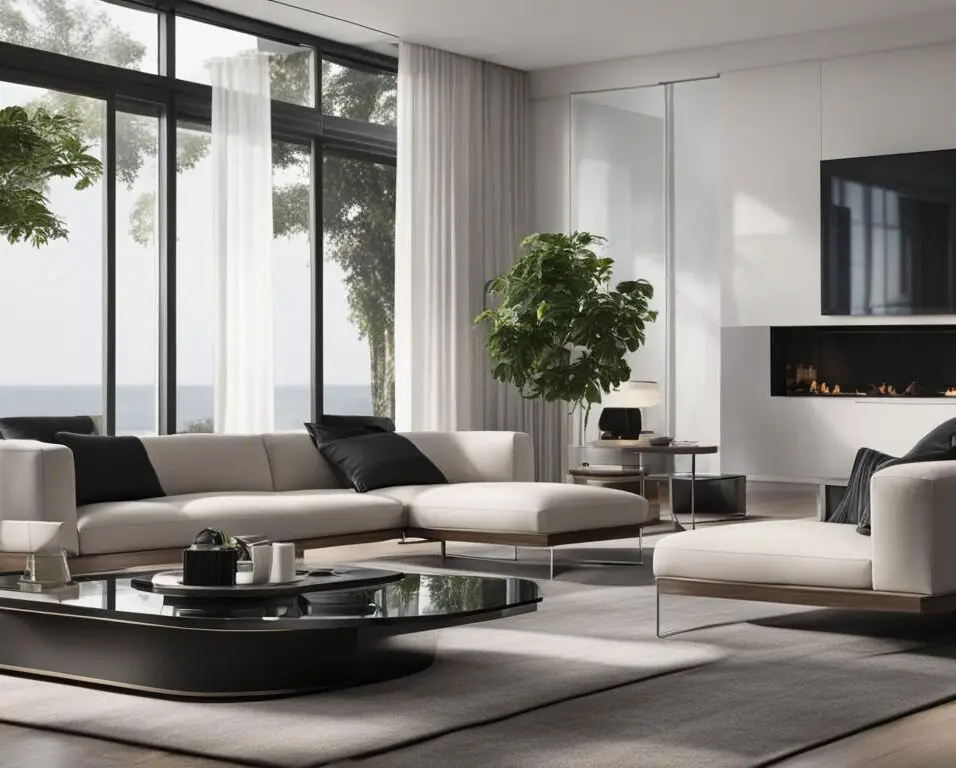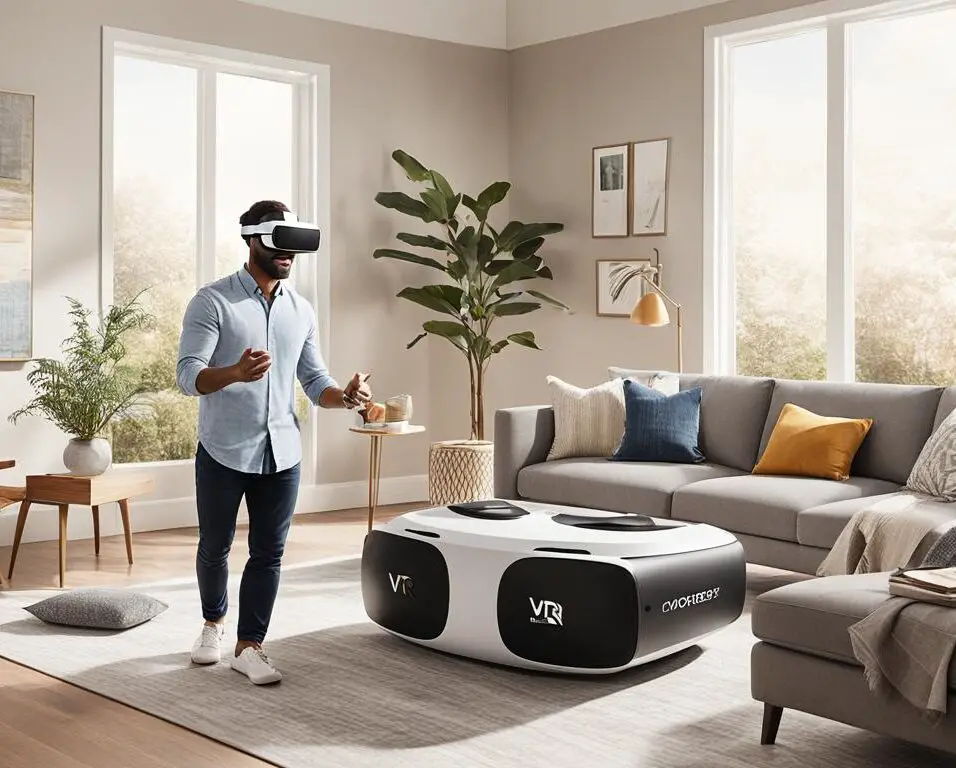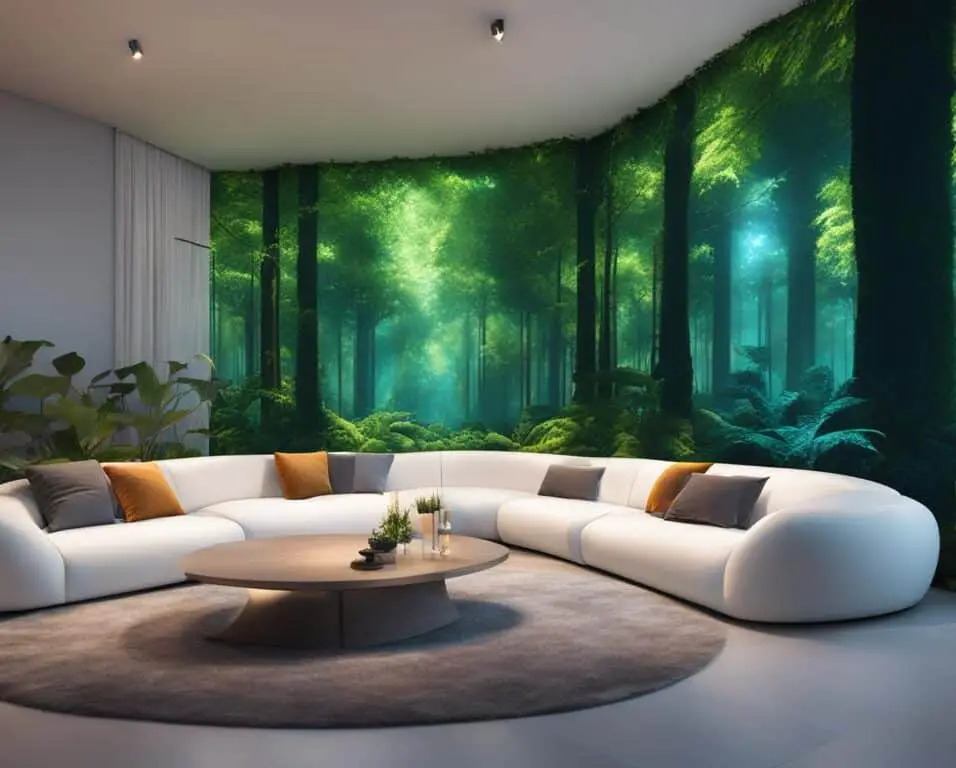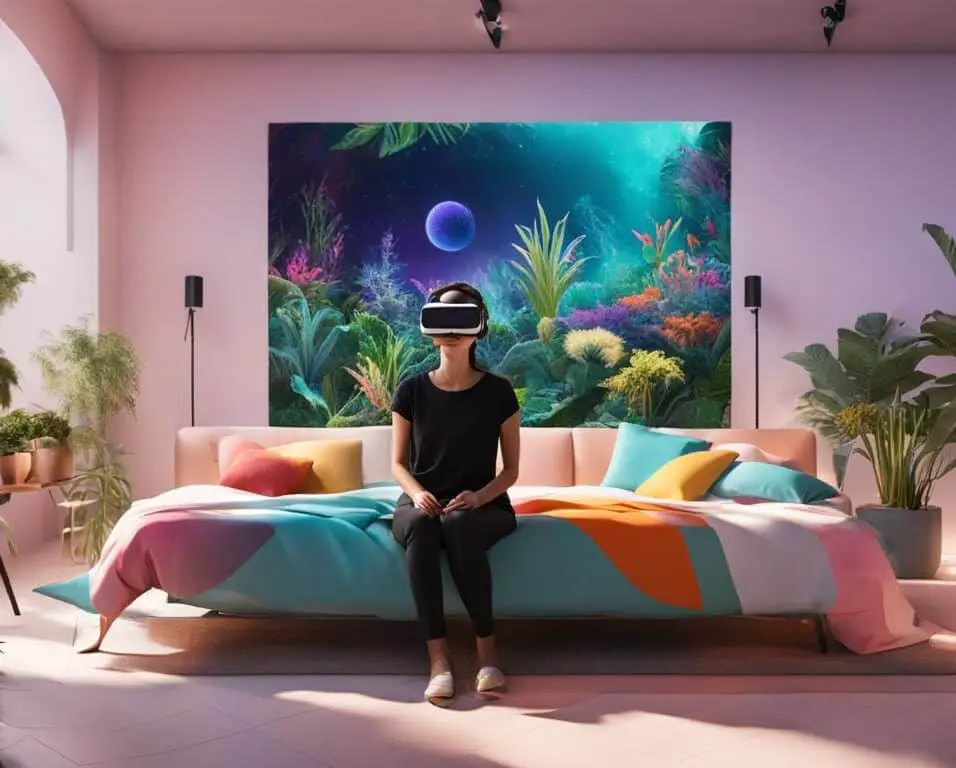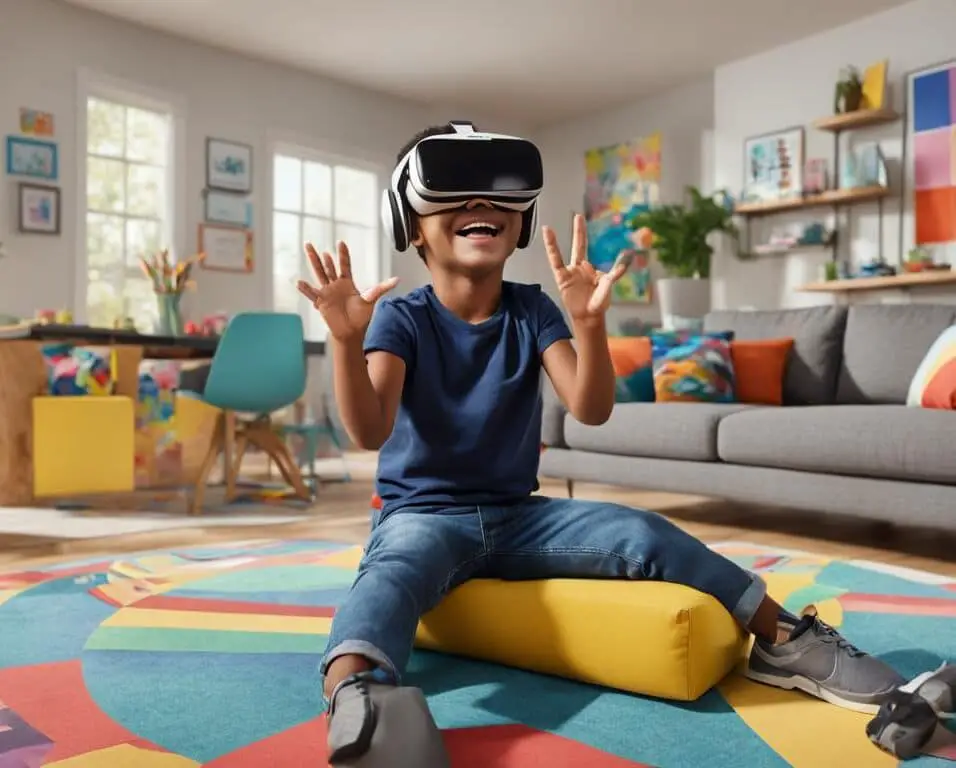Fusion of Realities: VR and AR in Home Building
Virtual Reality (VR) and Augmented Reality (AR) technologies are revolutionizing the home building industry, transforming the way homes are designed, visualized, and experienced by customers. With VR and AR, builders and designers can create immersive experiences that allow customers to visualize their future homes before construction even begins, leading to improved design accuracy, enhanced customer satisfaction, and increased marketing opportunities.
Imagine being able to step into a virtual model of your dream home, walking through each room, exploring the layout, and even customizing finishes and furnishings. VR and AR make it possible to create realistic virtual walkthroughs and interactive experiences, offering a glimpse into the future of home building.
By incorporating VR and AR into the home building process, builders and designers can showcase their projects in a more engaging and interactive way. These immersive technologies allow customers to not only see the design on paper but to experience it firsthand, providing a deeper understanding of the space and creating a stronger emotional connection.
Moreover, VR and AR are transforming the customer experience in home building. Potential buyers can take virtual home tours, experiencing the ambiance and getting a feel for the property without physically visiting the location. This technology allows customers to make more informed decisions, saving time and resources for both the buyer and the builder.
Key Takeaways:
- VR and AR technologies are revolutionizing the home building industry.
- They enable realistic virtual walkthroughs and interactive experiences.
- VR and AR enhance design accuracy and customer satisfaction.
- Virtual home tours provide a realistic and immersive experience for potential buyers.
- By incorporating VR and AR, home builders can showcase their projects in a more engaging way.
The Benefits of VR and AR in Home Building
The use of VR and AR in home building brings several benefits to both builders and customers. One of the key advantages is improved design accuracy. VR and AR technologies allow for detailed and realistic visualizations of the final product, helping designers and builders identify any potential flaws or design issues before construction begins. This ensures that the final product meets the customer’s expectations and reduces the need for costly design revisions.
“The ability to visualize every aspect of a home in a virtual environment allows us to make design decisions with more precision and confidence,” says Sarah Johnson, a renowned architect specializing in VR-driven home design.
Additionally, the use of VR and AR in home building contributes to enhanced customer satisfaction. By providing customers with realistic virtual tours and interactive experiences, home builders can give potential buyers a clear understanding of the space, finishes, and overall ambiance of the property. This level of immersive engagement allows customers to make more informed decisions and increases their satisfaction with their chosen home.
Benefits of VR and AR in Home Building:
| Design Accuracy | Customer Satisfaction | Marketing Opportunities |
|---|---|---|
| Helps identify potential design flaws or issues | Enhances customer understanding and decision-making | Allows for interactive and engaging marketing campaigns |
| Reduces the need for costly design revisions | Increases customer satisfaction and confidence | Attracts potential buyers with immersive experiences |
| Allows for precise design decision-making | Enables customers to visualize the final product | Provides a competitive edge in the market |
The utilization of VR and AR in home building also leads to increased marketing opportunities. With the ability to create immersive and interactive experiences, builders can showcase their projects in a more captivating way, attracting potential buyers and setting themselves apart from the competition. VR and AR technologies allow for effective storytelling and compelling presentations, maximizing the impact of marketing campaigns.
Overall, the integration of VR and AR in home building offers significant benefits, including improved design accuracy, enhanced customer satisfaction, and increased marketing opportunities. These technologies have revolutionized the industry, transforming the way homes are visualized and experienced. As the technology continues to advance, we can expect even more remarkable innovations and exciting possibilities in the future of home building.
Applications of VR and AR in Home Building
VR and AR technologies offer a myriad of applications in the home building industry. One of the most exciting and popular uses is the creation of virtual home tours. With VR technology, potential buyers can immerse themselves in a virtual walkthrough of a home, exploring each room and experiencing the layout, finishes, and ambiance in a realistic and interactive way. This innovative approach allows buyers to truly get a feel for the property without physically visiting the location.
Interactive design is another area where VR and AR shine. These technologies enable builders and designers to create dynamic and customizable virtual environments, where customers can experiment with different layouts, materials, and furnishings. This level of interactivity empowers homebuyers to actively participate in the design process, ensuring that their dream home becomes a tangible reality. From selecting paint colors to arranging furniture, VR and AR offer limitless possibilities for customization and personalization.
Furthermore, VR and AR technologies revolutionize the home building industry by taking design visualization to a whole new level. Builders and designers can create realistic virtual representations of their projects, allowing customers to explore and experience the homes before they are even built. Through the use of high-quality graphics, 3D models, and interactive elements, VR and AR provide a level of detail and immersion that was previously unimaginable.
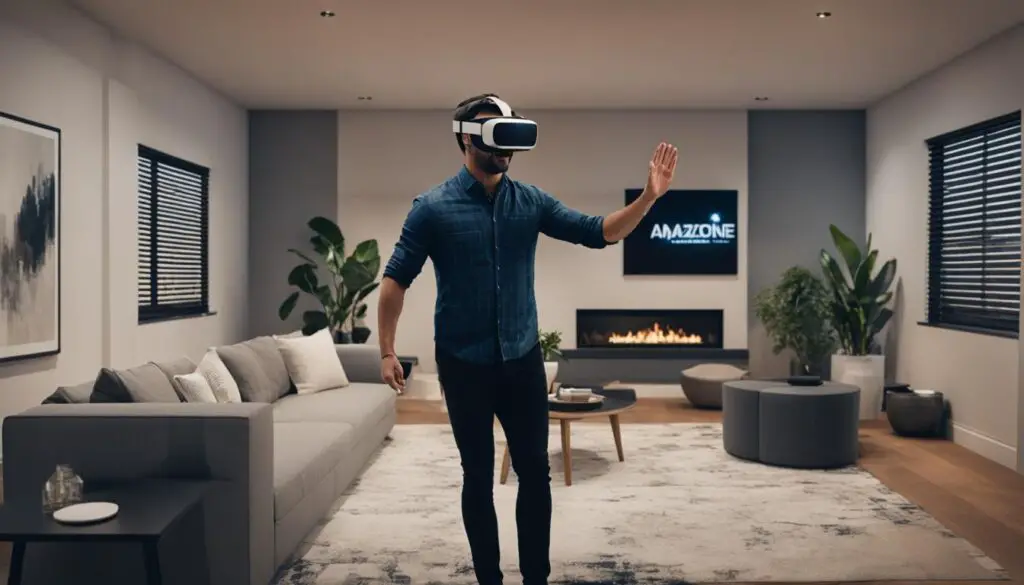
“The ability to take a virtual tour of a home and visualize the space in such a realistic manner is truly awe-inspiring. It allows us to make more informed decisions and feel confident about our choices before committing to the actual construction process.” – Sarah Jones, Homebuyer
The Benefits of VR and AR in Home Building:
- Enhanced visualization of design concepts
- Improved customer engagement and satisfaction
- Increased customization options and flexibility
- Reduced design errors and costly revisions
- Streamlined communication between builders and customers
- Elevated marketing and sales opportunities
The incorporation of VR and AR in home building fundamentally transforms the way properties are designed, visualized, and experienced. These immersive technologies, through virtual home tours, interactive design, and customization options, empower customers to make more informed decisions and create a truly personalized living space. As the technology continues to advance, the possibilities for VR and AR in home building are only limited by our imagination.
The Future of VR and AR in Home Building
The future of VR and AR in home building looks promising as technology continues to advance. As VR and AR headsets become more affordable and accessible, their integration into the home building process is expected to become even more widespread. Builders and designers will have the ability to create detailed virtual models of homes, enabling customers to experience them before construction even begins.
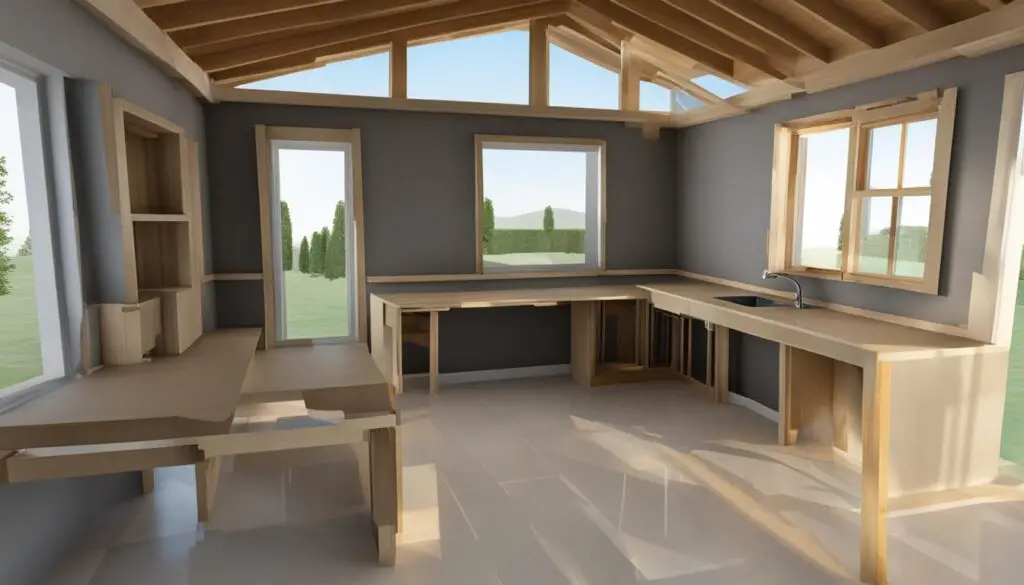
Advancements in VR and AR technology offer significant opportunities for the home building industry. The integration of these immersive technologies allows for more precise and efficient design processes, resulting in cost-effectiveness and enhanced customer satisfaction. With the ability to create detailed virtual models, builders and designers can showcase their projects in a realistic and interactive way, giving customers a firsthand experience of their future homes.
VR and AR also facilitate customization in home building, allowing customers to make informed decisions about design elements, finishes, and layouts. This level of interactive design empowers homebuyers to personalize their living spaces and ensures that the final product meets their expectations.
With VR and AR, builders and designers can revolutionize the home buying experience by providing potential customers with virtual tours of properties. This not only saves time and resources but also enables buyers to make more informed decisions without physically visiting each property.
In addition to its design and customer experience benefits, the integration of VR and AR in home building offers marketing opportunities. Builders can use these technologies to create engaging and visually appealing presentations, allowing potential buyers to envision themselves in the completed homes. This level of immersion and visualization sets a new standard in the industry and helps builders differentiate themselves in a competitive market.
Advancements in VR and AR in Home Building
| Advancements | Benefits |
|---|---|
| Improved headset affordability | Increased accessibility for builders and customers |
| Enhanced visual quality | Realistic and immersive virtual experiences |
| Advanced design software | Precise and efficient home design processes |
| Integration with AI and IoT | Smart home integration and customization |
| Real-time collaboration | Streamlined communication between builders, designers, and customers |
The continuous advancements in VR and AR technology, their integration into home building processes, and their cost-effectiveness contribute to the industry’s transformation. As more builders and designers embrace these technologies, the future of home building will be characterized by enhanced design accuracy, improved customer experiences, and increased marketing opportunities.
Conclusion
VR and AR technologies are revolutionizing the home building industry, transforming the way homes are designed, visualized, and experienced by customers. By incorporating VR and AR into home building, builders and designers can showcase their projects in a more engaging and interactive way, allowing customers to visualize the final product before it is built. The use of VR and AR in home building offers numerous benefits such as improved design accuracy, enhanced customer satisfaction, and increased marketing opportunities.
Visionary technologies like VR and AR bring several advantages to both builders and customers. The ability to create detailed and realistic visualizations improves design accuracy, enabling builders to identify potential flaws or design issues before construction begins. This ensures that the final product meets the customer’s expectations and reduces the need for costly design revisions.
The applications of VR and AR in the home building industry are vast, with virtual home tours being one of the most popular uses. With VR technology, potential buyers can take a virtual walkthrough of a home, exploring each room and experiencing the layout, finishes, and ambiance in a realistic and immersive way. This allows buyers to get a feel for the property without actually visiting the physical location. The future of VR and AR in home building looks promising as technology continues to advance, and their integration into the industry is expected to become even more widespread.
As VR and AR become more affordable and accessible, builders and designers will have the capacity to create detailed virtual models of homes, enabling customers to experience them before construction even begins. The use of VR and AR in home building is transforming the industry, providing improved design accuracy, enhanced customer experiences, and increased marketing opportunities. With the numerous benefits that VR and AR offer, the future of home building looks promising and exciting as these technologies continue to advance and further revolutionize the industry.
FAQ
How do VR and AR technologies revolutionize the home building industry?
VR and AR technologies revolutionize the home building industry by transforming the way homes are designed, visualized, and experienced by customers. These immersive technologies enhance the design process, create realistic virtual walkthroughs, and provide interactive experiences for potential homebuyers.
What are the benefits of using VR and AR in home building?
The benefits of using VR and AR in home building include improved design accuracy, enhanced customer satisfaction, and increased marketing opportunities. These technologies allow for detailed and realistic visualizations of the final product, help identify design flaws before construction, and provide engaging virtual experiences for potential buyers.
How are VR and AR used in the home building industry?
VR and AR are used in the home building industry for various purposes. One popular use is virtual home tours, where potential buyers can take a realistic walkthrough of a home and experience its layout, finishes, and ambiance. These technologies are also used for interactive design and customization, allowing customers to visualize and personalize their future homes.
How will VR and AR technology impact the future of home building?
As VR and AR technology continues to advance and become more accessible, their integration into the home building process is expected to become even more widespread. Builders and designers will be able to create detailed virtual models of homes, enabling customers to experience them before construction even begins, leading to cost-effectiveness and advancements in the industry.
What are the benefits of VR and AR in the home building industry?
The benefits of VR and AR in the home building industry include improved design accuracy, enhanced customer experiences, and increased marketing opportunities. These technologies allow builders and designers to showcase their projects in a more engaging and interactive way, while also enabling customers to visualize their future homes before construction begins.



